I've been working on an update about the 4 audio systems that are cooking here at Jeff's Place right now, and I'll be parsing out updates as Parts 1, 2, 3, and 4, as I get a chance to finish writing them up, so stay tuned for much more to come as I get more time to write.
"System 1" (below) is the first system I want to tell you about, consisting of my Tannoy Westminster Royal SE Loudspeakers with custom external Duelund CAST crossovers (more HERE), the Triode Lab 45 EVO SET integrated amplifier (review HERE), the Leben RS-30EQ phono equalizer (review HERE), the Audio Note (UK) Io I MC phono cartridge, AN-S4 step-up transformer, AN-V silver interconnects (review HERE), and the Audio Note (UK) CD 4.1x CD player (more HERE, and next up in my review queue for a feature review at Positive Feedback).
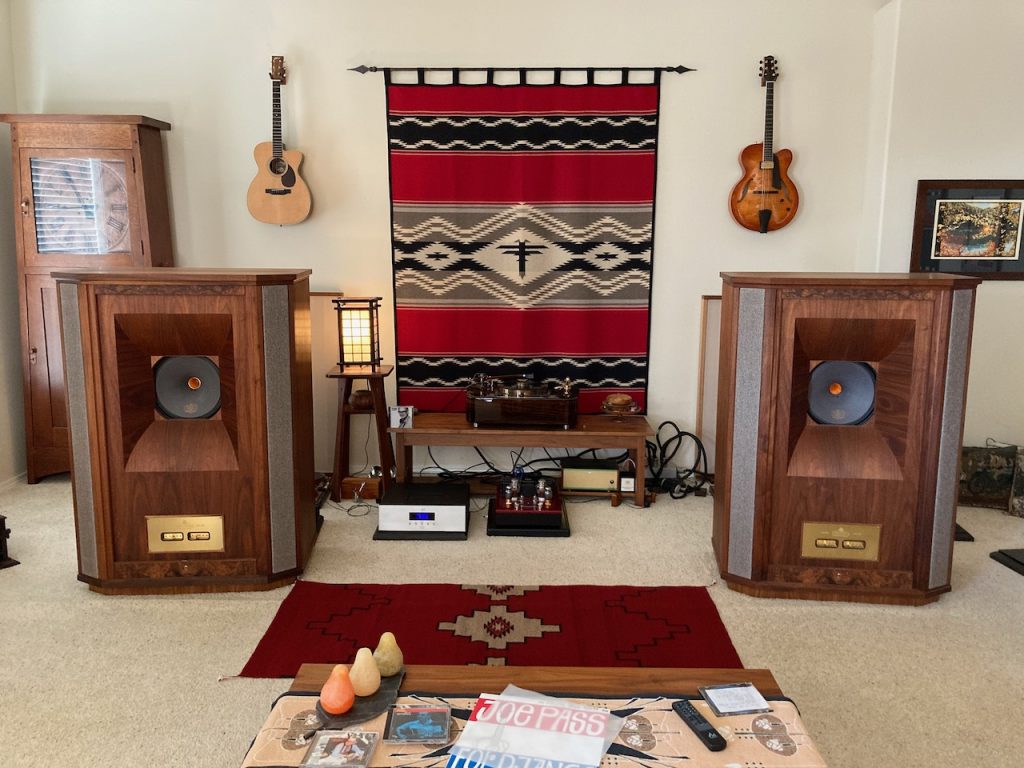
System 1. My primary music listening audio system at the moment.
"System 1" is my primary music listening system these days, and all the components in System 1 are fully run-in.
System voicing has been optimized via the 'comparison by contrast' method of voicing to achieve the best balance of musicality and sound quality over a span of lower-fidelity to high-fidelity recordings from the acoustic (1877 to 1925), electric (1925 to 1945), magnetic (1945 to 1975), and digital (1975 to present) eras of the recording arts.
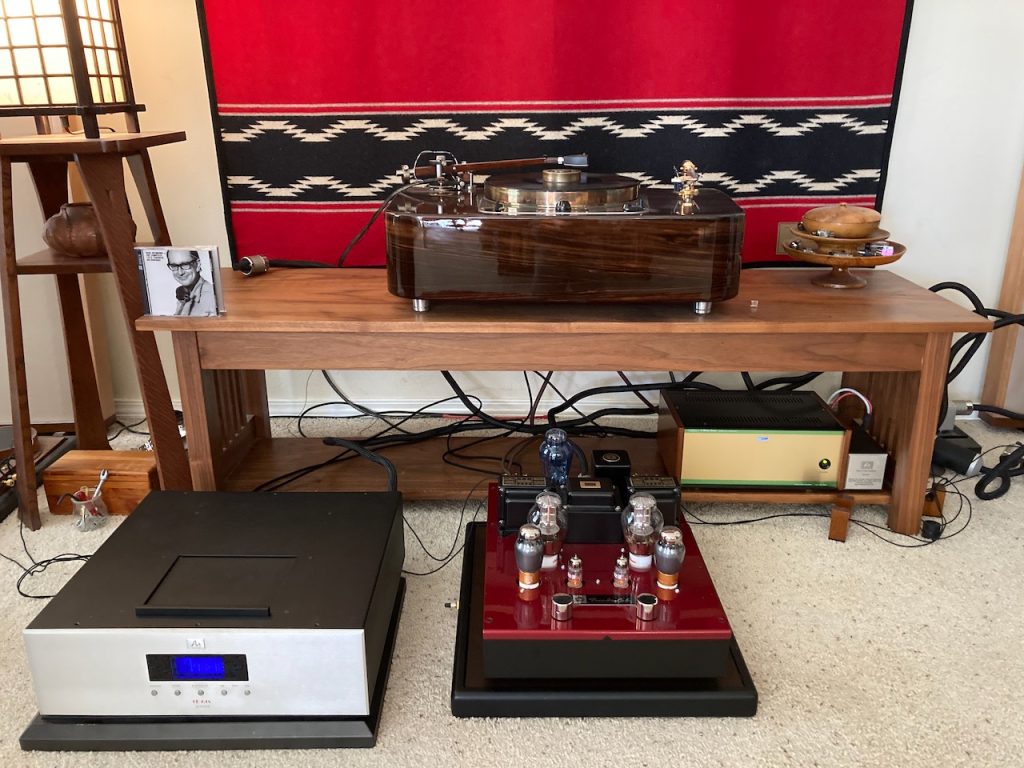
Left to right: Audio Note (UK) CD 4.1x, Triode Lab 45 EVO, Leben RS-30EQ, and Audio Note (UK) AN-S4 SUT.
This combination of Audio Note (UK) analog and digital sources, Triode Lab 45 EVO SET integrated amplifier, Westminster Royal SE loudspeakers (with Duelund CAST crossovers), and cabling is so ridiculously good from both a sound quality and musicality perspective, that I am pretty much in awe of what I'm hearing.
System 1 is just one of those 'magic' combinations of audio equipment, and is by far my favorite music listening system that I've had in my living room to date.
I just said 'cabling' above, so I thought I'd better elaborate a little more about the cabling I'm using.
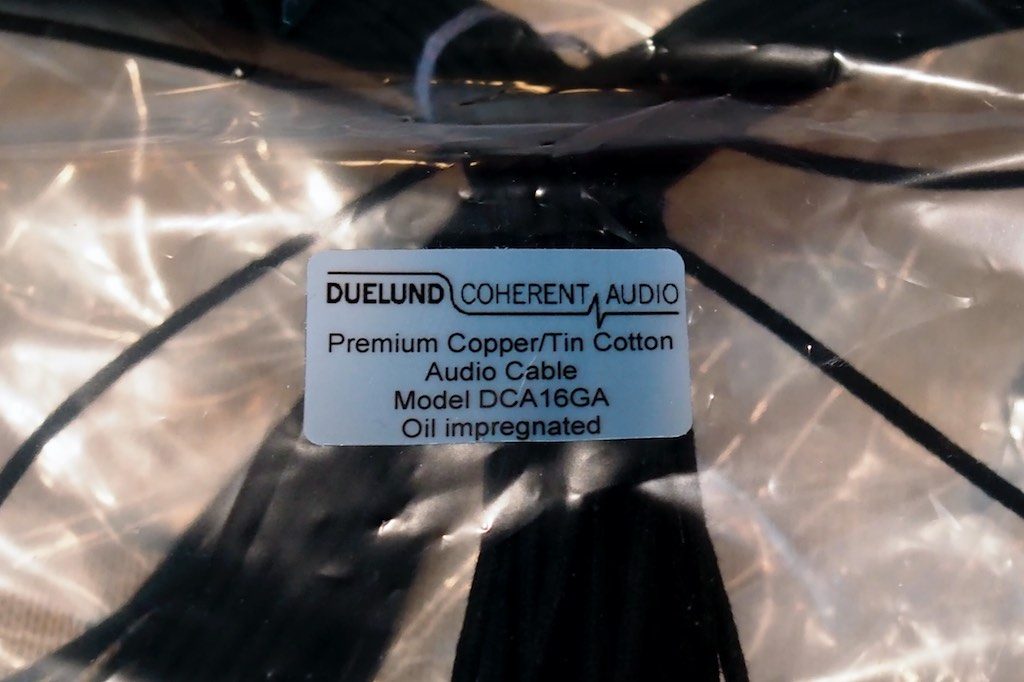
Vintage inspired Duelund DCA16GA tinned-copper wire.
The speaker cables are the vintage inspired Duelund DCA16GA tinned-copper speaker cables (above).
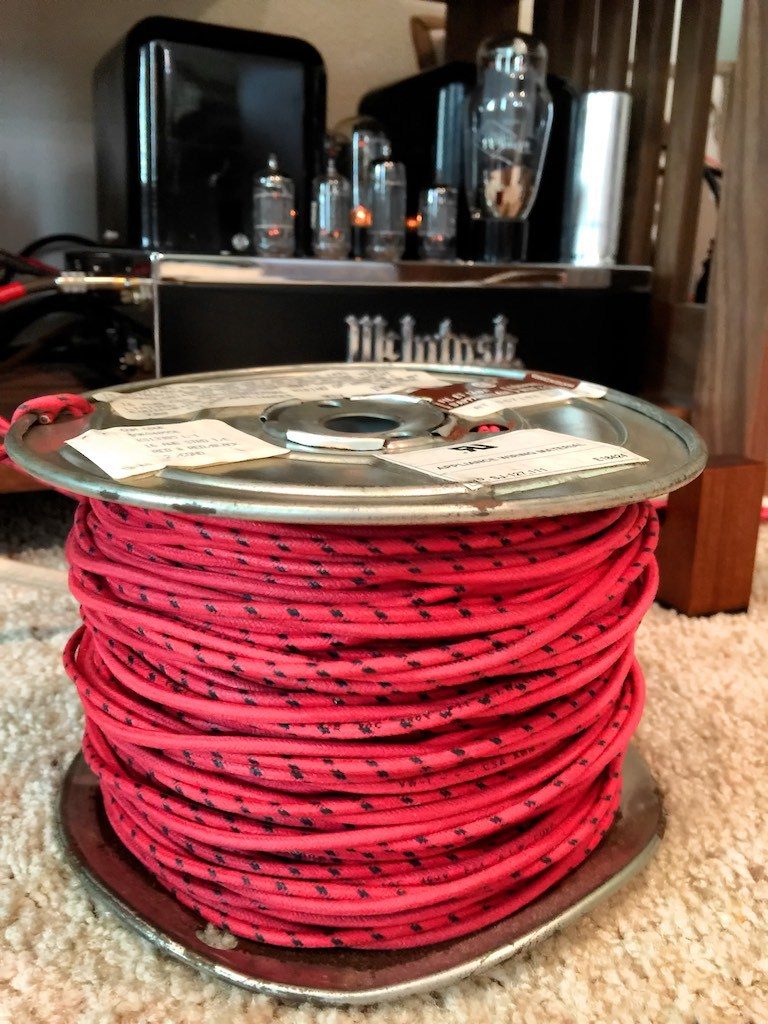
Vintage Western Electric WE16GA tinned-copper wire recommended by Yazaki-san.
Vintage Western Electric WE16GA tinned-copper cabling (above) was used for all driver connections inside my Westminsters, and to connect to the external Duelund crossovers (below).
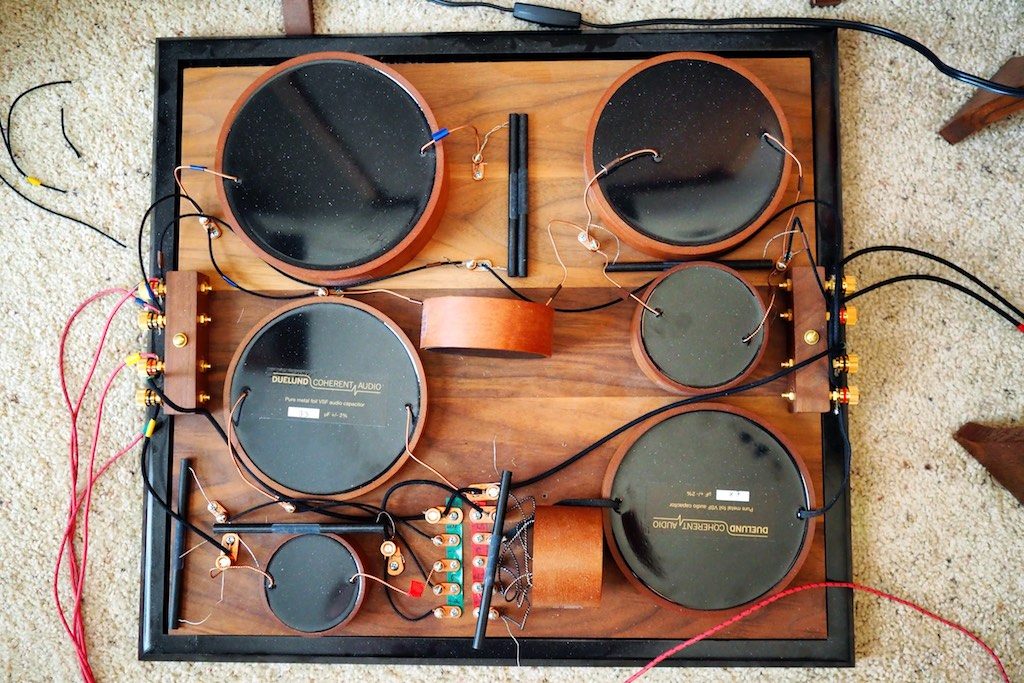
Duelund CAST crossover for Tannoy Westminster loudspeaker.
Duelund 'Dual' DCA16GA tinned-copper interconnects terminated with plastic-free Duelund RCAs connect the CD 4.1x to the Triode Lab 45 EVO SET integrated amplifier (below).
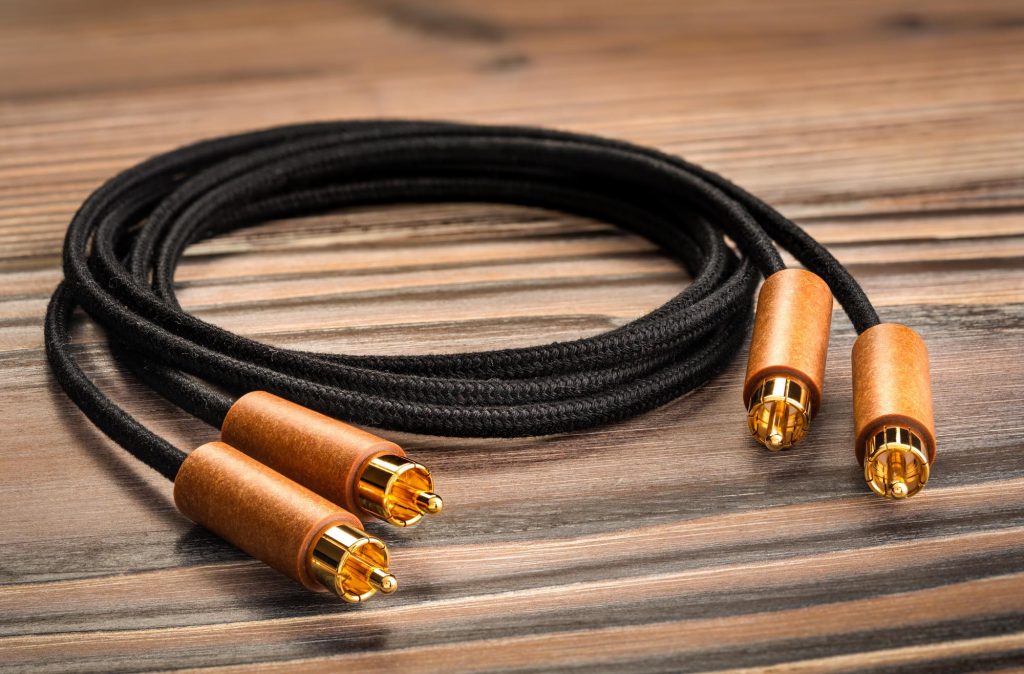
Duelund 'Dual' DCA16GA tinned-copper interconnects, photo courtesy of Duelund Coherent Audio.
Belden 8402 tinned-copper microphone cable interconnects (below) connect the Leben RS-30EQ phono equalizer to the Triode Lab 45 EVO integrated amplifier.
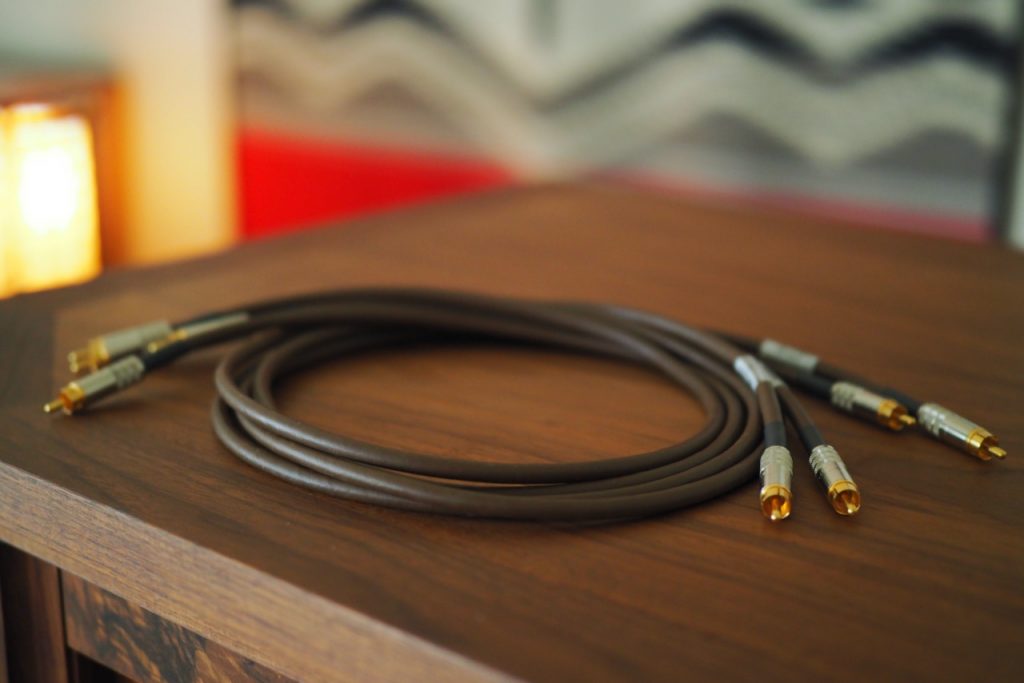
Belden 8402 microphone cable interconnects
Audio Note (UK) AN-V silver interconnects (below) connect the Audio Note (UK) AN-S4 step-up transformer to the Leben RS-30EQ phono equalizer
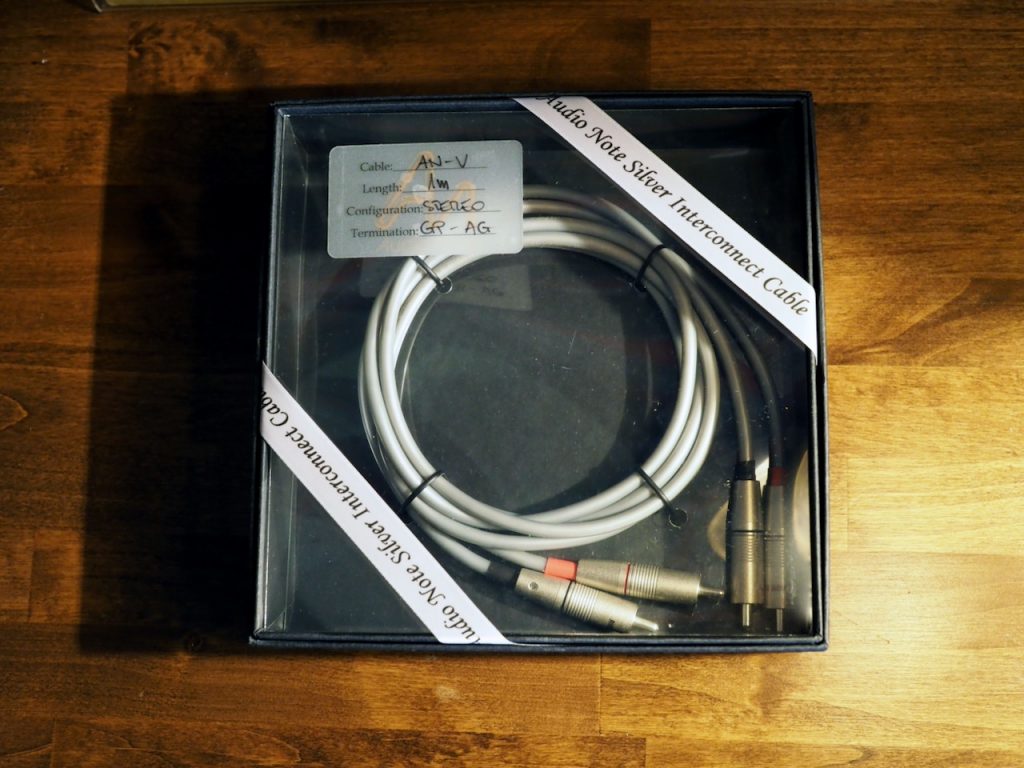
Audio Note (UK) AN-V silver interconnects.
Just as a note, the Audio Note (UK) Io I MC phono cartridge is mounted on a Soundsmith Wooden Headshell with azimuth adjustment (HERE).
Azimuth adjustment is a nice touch which I wish every headshell had, so kudos to Peter Ledermann for including it.
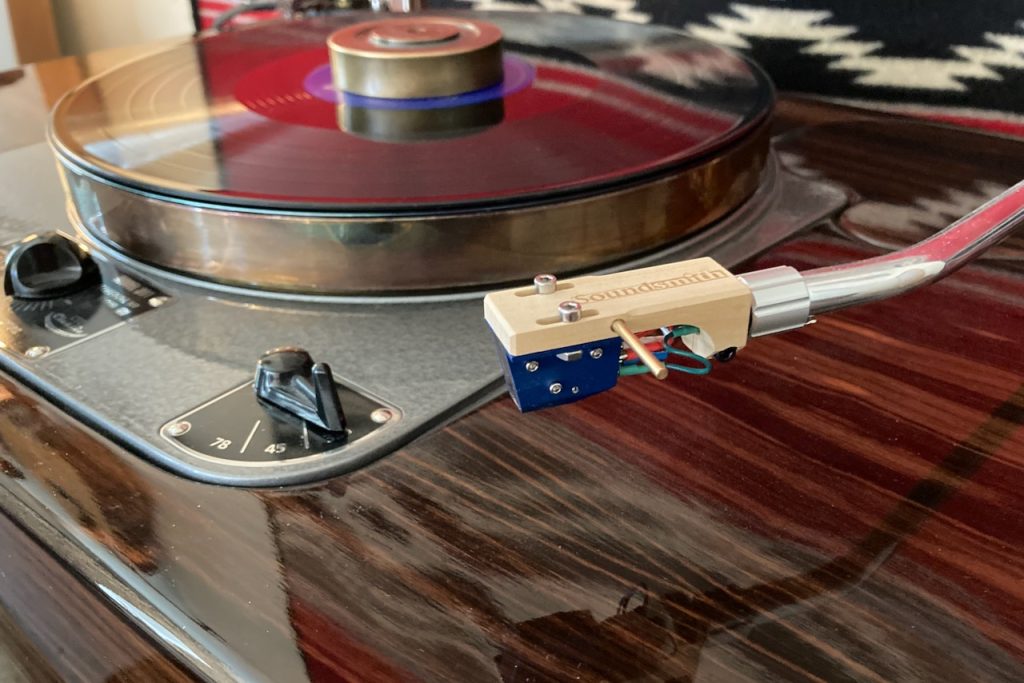
Audio Note (UK) Io I MC phonograph cartridge mounted on Soundsmith headshell.
Power cables for the components are Acoustic Revive Absolute, which all plug into an Acoustic Revive RPT-6 Absolute NCF Power Distributor unit, which itself is connected to wall AC with an Acoustic Revive Absolute power cable.
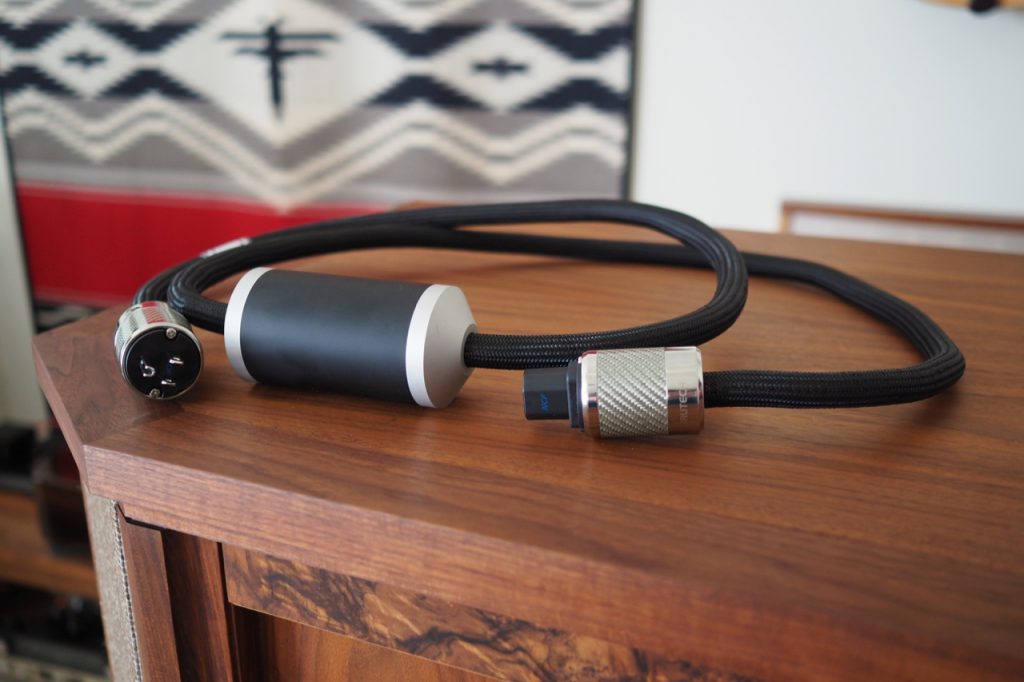
Acoustic Revive Absolute power cable.

Acoustic Revive Absolute RPT-6 power distributor.
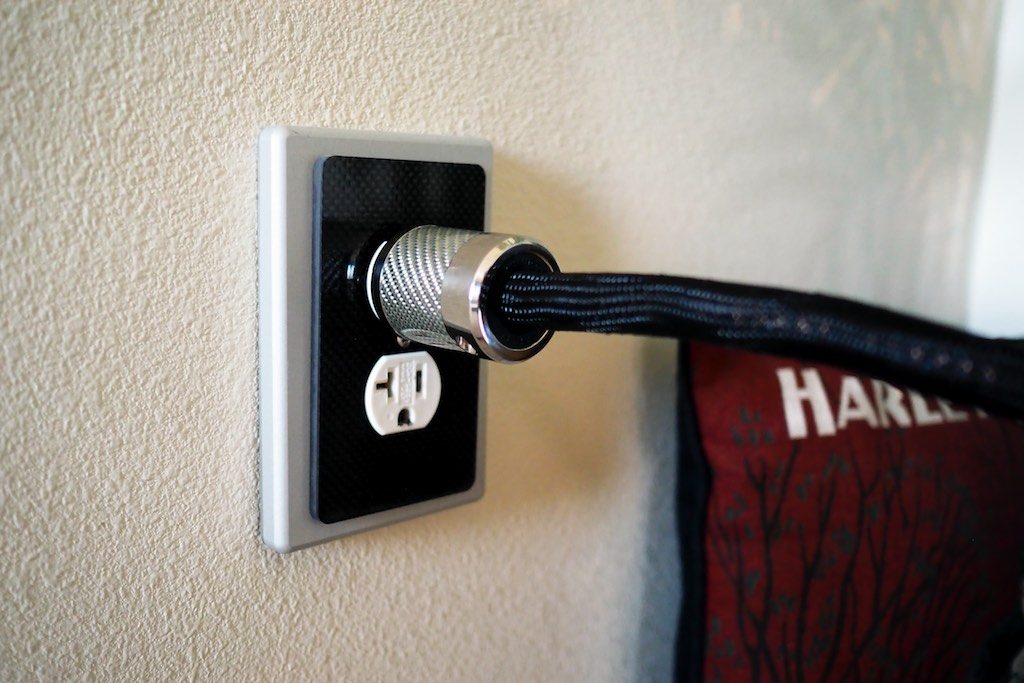
Acoustic Revive wall outlets.
My wall AC outlets (above) consist of the Acoustic Revive CB-1DB receptacle base plate, CFRP-1F carbon fiber outlet plate, and an Acoustic Revive modified Oyaide R-1 receptacle.

CTC Garrard 301 turntable, Spec turntable mat, Artisan Fidelity plinth, Schick tonearm, Audio Note (UK) Io I MC phonograph cartridge, mounted on Soundsmith Wooden Headshell with azimuth adjustment.
The combination of my CTC Garrard 301 with the Audio Note (UK) Io I MC phono cartridge, AN-S4 SUT, and AN-V silver interconnects (review HERE) with the Leben RS-30EQ phono equalizer makes for a truly impressive analog source, and for my tastes, priorities, etc., this is my favorite vinyl front end that I've heard in my own home.

Leben RS-30EQ phono equalizer with Audio Note (UK) AN-S4 SUT.
The Audio Note (UK) Io I MC phono cartridge, AN-S4 SUT, and AN-V silver interconnects in this setup are impressively refined both musically, and from a sound quality perspective (review (HERE).
These digital and analog front ends will be part of the upcoming feature review at Positive Feedback of a complete Audio Note (UK) Level 3 system, loudspeakers excepted, that is, as I'll be using my Tannoy Westminster Royal SE loudspeakers for that article.
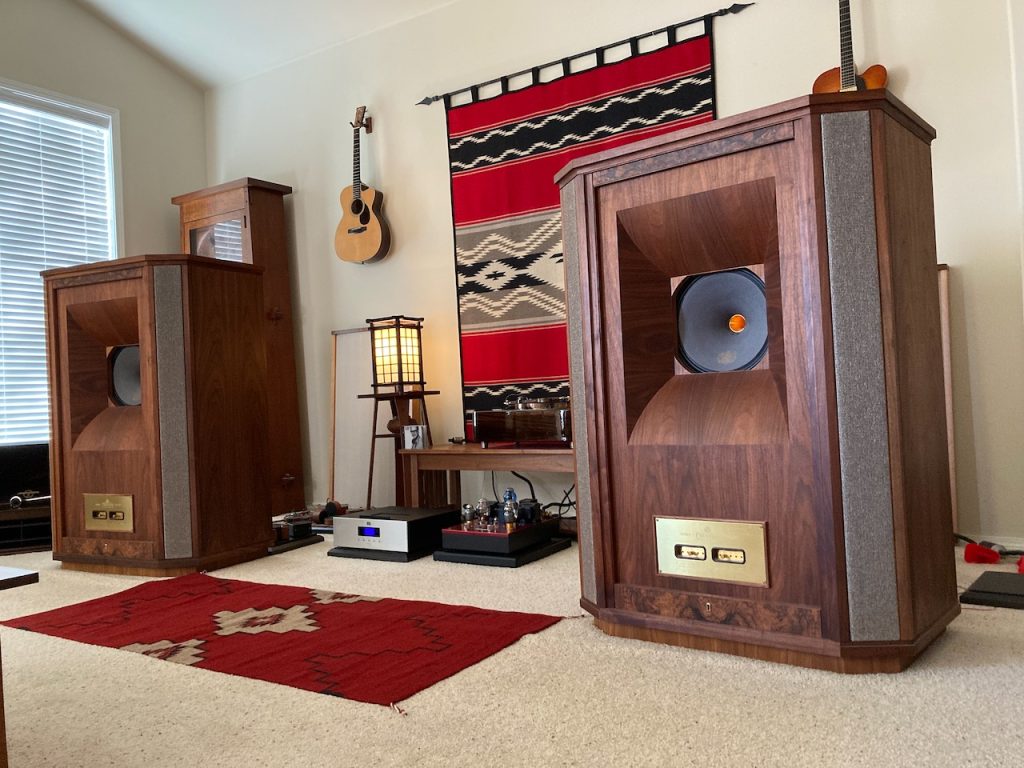
The positioning of my Westminster loudspeakers is in a classic audiophile arrangement, with a modified rule of thirds/fifths sort of positioning.
The front of my West's are 77 inches out from the front wall, sides are 48 inches from the side walls, and the loudspeakers are 112 inches apart, center-to-center.
My listening position is about 12 feet from the Westminsters on the angle of a 'listening triangle', and the rear wall is about 12 feet behind my listening 'couch'.
This arrangement, in classic audiophile fashion, accentuates visuospatial information encoded in magnetic era and digital era stereo recordings to provide a wide and deep soundstage, high transparency and resolution, exceptional imaging, and nuanced dynamics.
As I mentioned above, the system voicing has been optimized via the 'comparison by contrast' method to achieve the best balance of musicality and sound quality over a span of lower-fidelity to high-fidelity recordings from the acoustic, electric, magnetic, and digital eras of the recording arts.
My 'comparison by contrast' voicing process has a couple of different aspects to it.
My first consideration is that when listening to high-fidelity recordings - primarily those from the magnetic era of stereo recording - I want to hear a sense of realistic instrumental timbre, resolution of tone color, melody, harmony, rhythm, tempo, dynamics, and loudness (the ability to play naturally at live-like levels appropriate to a piece of music).
The second consideration is that I enjoy listening to monaural recordings from the acoustic, electric, and early magnetic era of recordings, as many of the greatest musical performances recorded in our historic music canon reside there.
Each of those eras of monaural recordings have a certain set of traits associated with them regarding their bandwidth, tonality, levels of noise, dynamics, etc., that I want to preserve to maintain a sense of their 'authenticity' to their era of the recording arts.
In monaural recordings, visuospatial cues like soundstage and imaging are greatly reduced, if they exist at all, so for those recordings I listen primarily for how well the audio system conveys the quality of the musical performances, regardless of their early 'lower-fidelity' recording quality.
I voice the system's tonal balance so that the sound quality issues of lower-fidelity recordings are not exaggerated, allowing me to fully enjoy the musical performances from each of those recording eras.
When I've completed the voicing process, it allows me as a listener to enjoyably listen to a wide range of recordings of varied recording quality, while minimizing sound quality issues of lower-fidelity recordings, while still presenting high-fidelity recordings in all their glory.
I've come to consider at CD player as an indispensable audio component, as many of the finest musical performances from the acoustic, electric, magnetic, and digital eras of the recording arts are now readily available on CD, making a CD player a very convenient source component for those of us who like to explore the great recordings of music from all eras.
CD players had a disappointing debut way back when at their introduction, sounding sterile, harsh, and just generally amusical.
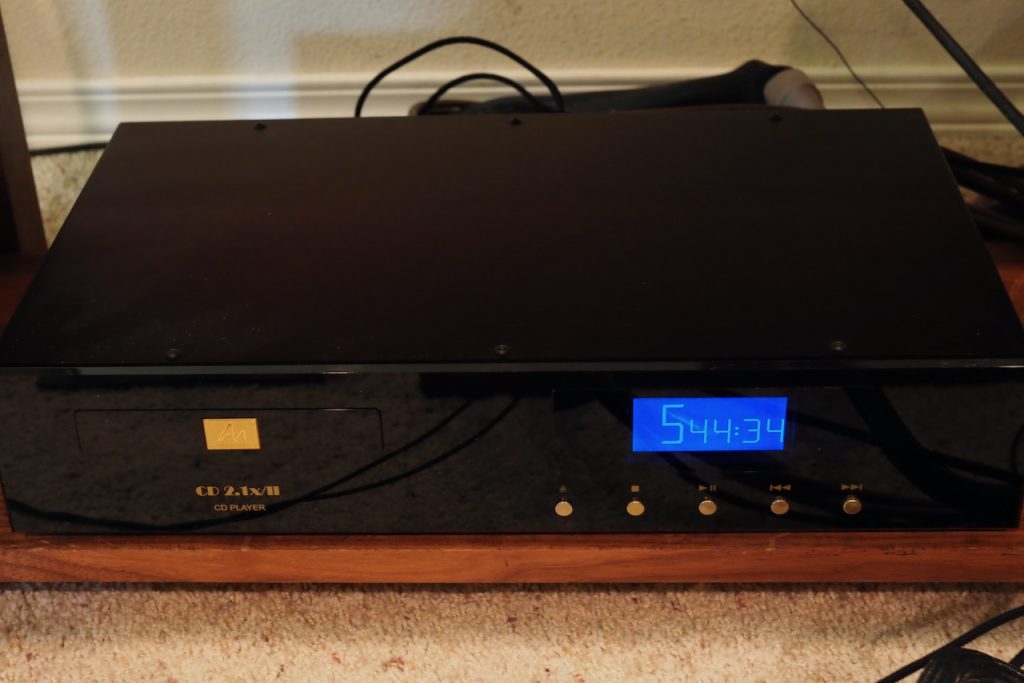
Level 2 Audio Note (UK) CD 2.1x/II Red Book CD player.
As I found in my review of the Level 2 Audio Note (UK) CD 2.1x/II Red Book CD player (review HERE), that sterile, harsh, and amusical performance I associated with early CD players does not apply to the CD 2.1x/II at all.
The Level 2 Audio Note (UK) CD 2.1x/II Red Book CD player provided a natural sounding, eminently musical, and high-fidelity presentation of recorded music from compact discs that rivaled the enjoyment I experience when listening to records on my turntable.
It turns out that there is a lot more musical potential in those Red Book CDs than I had ever imagined possible, so that was quite a welcome revelation.
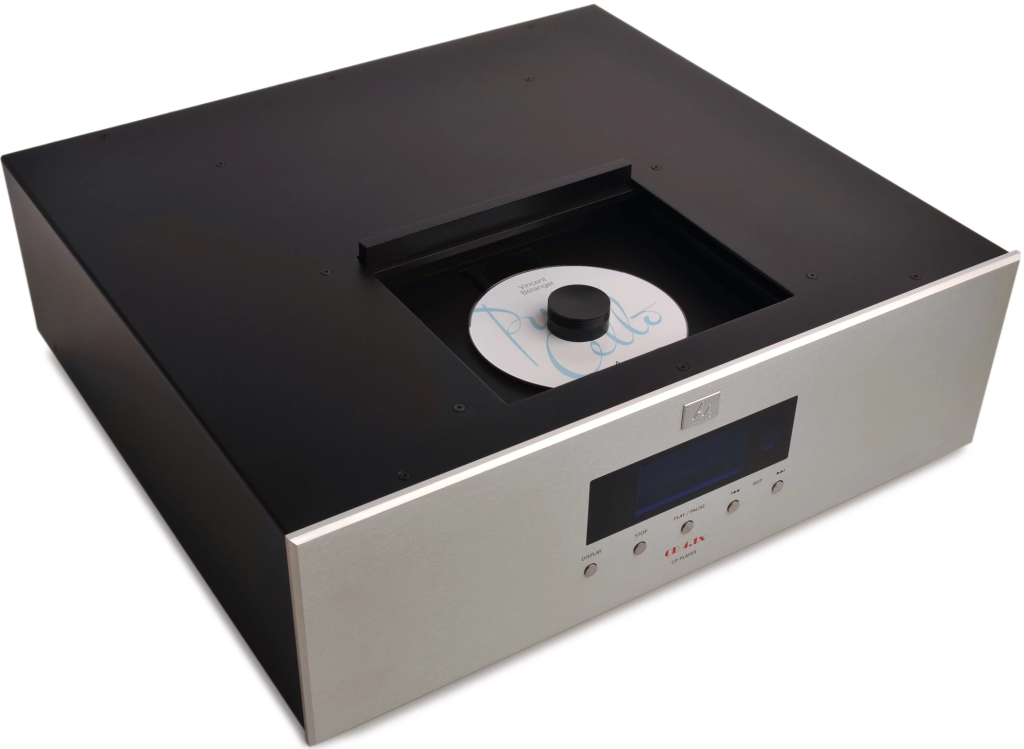
Level 3 Audio Note (UK) CD 4.1x Red Book CD player. Photo courtesy of Audio Note (UK).
The Level 3 Audio Note (UK) CD 4.1x Red Book CD player is two slots above the Level 2 Audio Note (UK) CD 2.1x/II Red Book CD player in the Audio Note (UK) CD player product line, and one slot below the top-of-the-line Audio Note (UK) CD 5.1x Red Book CD player.
I've asked Audio Note (UK)'s digital guru Darko Greguras if he could tell us a little more about the design of the Level 3 CD 4.1x, and how it compares to the design of the Level 2 CD 2.1x/II that I wrote about for you in Positive Feedback Issue 112, which I'll share with you in the upcoming feature review of the CD 4.1x in Positive Feedback.

Inside the Level 3 Audio Note (UK) CD 4.1x Red Book CD player.
For now, suffice it to say that the CD 4.1x is an ambitious design using a top-shelf chassis, componentry, transport, power supply sections, transformers, processor, logic circuits, motors, actuators and controller/display, etc.
As much as I love listening to music with the CD 2.1x/II, the CD 4.1x is a considerable step up in performance.
When the CD 4.1x first arrived here, my jazz guitarist friend David and I had been listening to the CD 2.1x/II regularly, and really liked what we heard from it. Not only was the CD 2.1x/II very musically engaging, it also had great sound quality, which made it easy to pick out what the great jazz guitarists were doing technique-wise in their record albums.
The CD 4.1x maintains the same sort of musicality of the CD 2.1x/II, which seems to get the best out of the acoustic, electric, magnetic, and digital era recordings I enjoy listening to, but everything about the CD 4.1x's sound quality and overall performance are at a higher level, or as New Englanders like to say, "Wicked good!"
I've really enjoyed listening to the great Joséphine Baker (June 3, 1906 to April 12, 1975) on the A Centenary Tribute CD (Sepia 1065), that includes digital transfers from 78 records from the electric era of the recording arts.
Joséphine's is a rather amazing story. Born in the USA, Joséphine became a naturalized French citizen, a renowned French entertainer of incredible talents, an agent of the French resistance, and an advocate of the civil rights movement in the USA.
I mean, "Wow!", what an incredible lady!

Josephine Baker, A Centenary Tribute (Sepia 1065)
The CD 4.1x plays the electric era 78 recordings on the A Centenary Tribute album in a remarkably beautiful and engaging fashion that I found to be completely engrossing during my listening.
Joséphine's vocal talents were stunning, her voice remarkably beautiful, and these 78 recordings are vibrant and dynamic in a way that few magnetic era recordings can match.
These 78 record transfers are monaural, so there isn't much in the way of soundstage width information encoded in them, as with magnetic era stereo recordings, but the resolution of the individual aural images is remarkably good even on these 78 transfers.
I bet if you were here listening with me to A Centenary Tribute, and I told you these were transfers of monaural recordings from the magnetic era, you'd believe it, as the sound quality is remarkably good.
If you haven't yet had an opportunity to listen to the stunning performances of Joséphine Baker, that's something you should do at your first opportunity.
The Audio Note (UK) CD 4.1x Red Book CD player really allows these superb performances of Joséphine Baker to come through full of life and in all their glory.
The intensity of the musical experience the CD 4.1x delivers is of such beauty, grandeur, and excellence, that it earned my sincerest admiration for its transcendent performance.
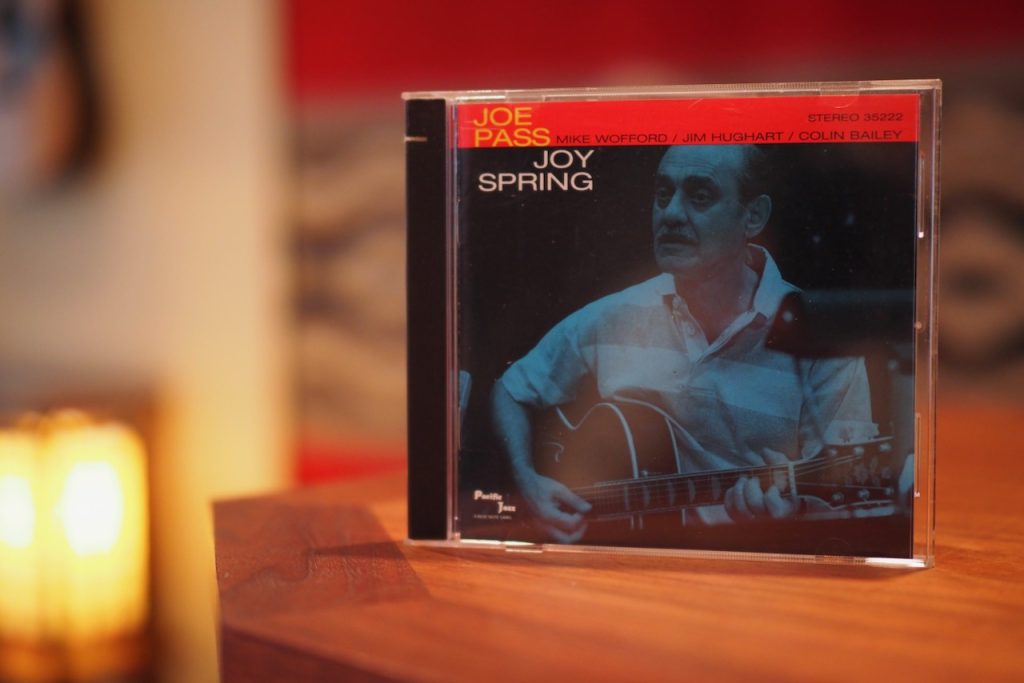
Joe Pass, Joy Spring (Pacific Jazz)
I've been listening to a number of Joe Pass albums lately, when Joe was at the peak of his creative powers, like Joy Spring, For Django, and Simplicity, which were recorded in 1964, 1964, and 1967, respectively.
Those recordings of Joe were during the peak of the magnetic era stereo recording arts as well, so they have all those width, depth, and aural imaging soundstage cues that add a little pizzaz to listening sessions, which makes me feel like I've been transported to the recording sessions.
Joe's tone on Joy Spring is what I think of as the ultimate jazz guitar tone, and the Audio Note (UK) CD 4.1x CD player presents Joe's tone beautifully.
The performances were recorded live at the Encore Theater in Los Angeles on February 6, 1964, and the CD 4.1x captures the excitement of those live performances extremely well.
As Joe improvises, the CD 4.1x resolves every note in natural fashion, and if you were of a mind to transcribe the solos, you could with no problem given the level of resolution and articulation of the CD 4.1x.
I love what the CD 4.1x does for these magnetic era stereo recordings of Joe Pass, bringing them to life in such realistic fashion, it makes me feel live I was in the audience listening to one of the greatest jazz guitarist of all time during the most creative period of his prolific album output.
By the way, I've listened to the Audio Note (UK) CD 4.1x CD player now in a number of equipment contexts, with the Audio Note (UK) Meishu Phono Silver Tonmeister 300B SET integrated amplifier, the Triode Lab 45 EVO SET integrated amplifier, and the Triode Lab 2A3 P-SET RSR monaural amplifiers, and in every case its performance was spectacular.
The Audio Note (UK) CD 4.1x CD player plays well with others, and I suspect you'd get the same lofty level of performance I heard from it on whatever systems you have.
As an aside, the Audio Note (UK) CD 4.1x CD player is so good at extracting and playing the music encoded on CDs, that I suspect its level of performance will eclipse the performance of many turntables, except for the ambitious top-shelf ones.
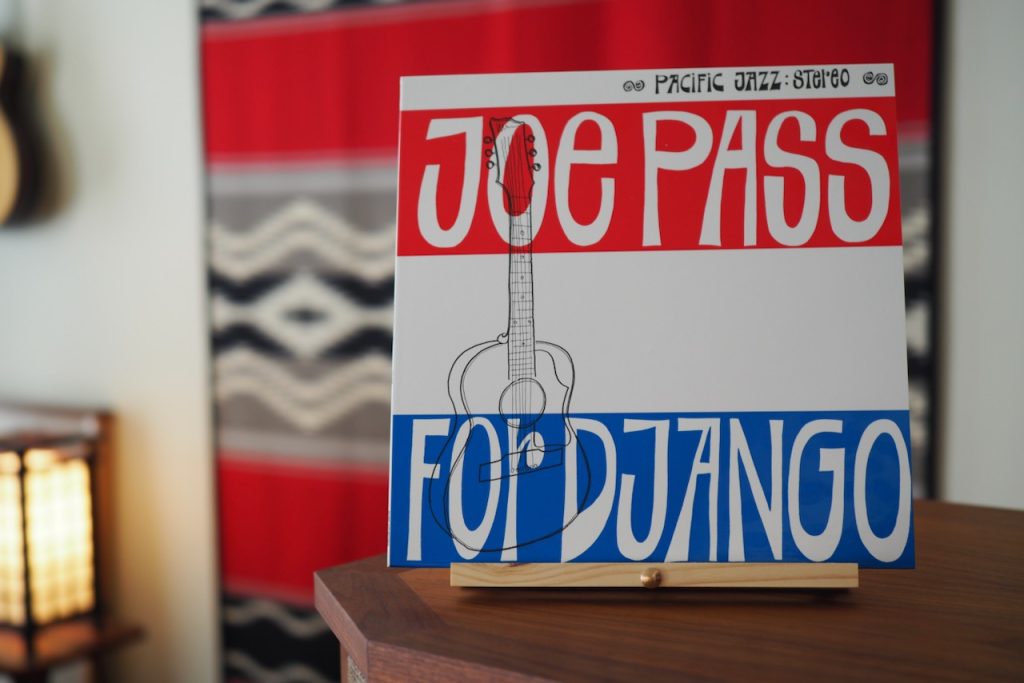
Joe Pass, For Django, Blue Note Tone Poet series reissue LP.
The For Django sessions were recorded a few months after Joy Spring, and feature Joe Pass at his most creative.
I recently purchased the Blue Note Tone Poet series reissue LP of For Django, so I thought I'd give it a listen with the combination of the Audio Note (UK) Io I MC phono cartridge, AN-S4 SUT, and AN-V silver interconnects.
I'll tell you what, a turntable, direct-heated single-ended-triode amplification, and horn loudspeakers aren't the only way to listen to and enjoy music, but they sure a great way, and they bring the great musical performances on Joy Spring to breathtaking life.
The combination of the Audio Note (UK) analog front end, the Triode Lab 45 EVO SET integrated amplifier, and my big Tannoy Westminster Royal SE loudspeakers with their Duelund CAST crossovers, is really something to hear.
The overall voicing of the CD 4.1x is very analogue-like, and its musicality and sound quality is truly sublime, with an overall voicing that is not unlike what I'm hearing from the combination of the Audio Note (UK) Io I MC phono cartridge, AN-S4 SUT, and AN-V silver interconnects.
However, the combination of Audio Note (UK) Io I MC phono cartridge, AN-S4 SUT, AN-V silver interconnects is at another level of performance, much like the difference I hear when going from the Audio Note (UK) CD 2.1x/II CD player to the Audio Note (UK) CD 4.1x CD player.
These are all impressive source components, but top-shelf analog still has that little bit extra going for it. Extra presence, extra clarity, extra naturalness, extra tone, extra everything.
On Joy Spring Joe Pass' improvising is stunning, and the Audio Note (UK) Io I MC phono cartridge, AN-S4 SUT, and AN-V silver interconnects gets the tonality beautifully right, and resolves every note perfectly as they flow by.
When I hear this so breathtakingly good Audio Note (UK) analog front end, its easy for me to understand why LPs are in an ongoing renaissance period among hifi buffs and music lovers alike.
I'm really enjoying listening to these Audio Note (UK) analog and digital sources, they just get the music right, and with superb sound quality while doing it.
Combined with my Tannoy Westminster Royal SE loudspeakers and Duelund crossovers, the Triode Lab 45 EVO SET integrated amplifier, and the Leben RS-30EQ phono equalizer, I just have to pinch myself to make sure I'm not dreaming. This is certainly - by far - the best audio system for my tastes that I've heard to date in my living room. Just really superb!
Ok, that's it for now. Stay tuned for Part 2, where I'll have more to say about another system with horn-loaded loudspeakers, single-ended-triode amplification, and analog and digital front ends.
As always, thanks for stopping by, and may the tone be with you!






























